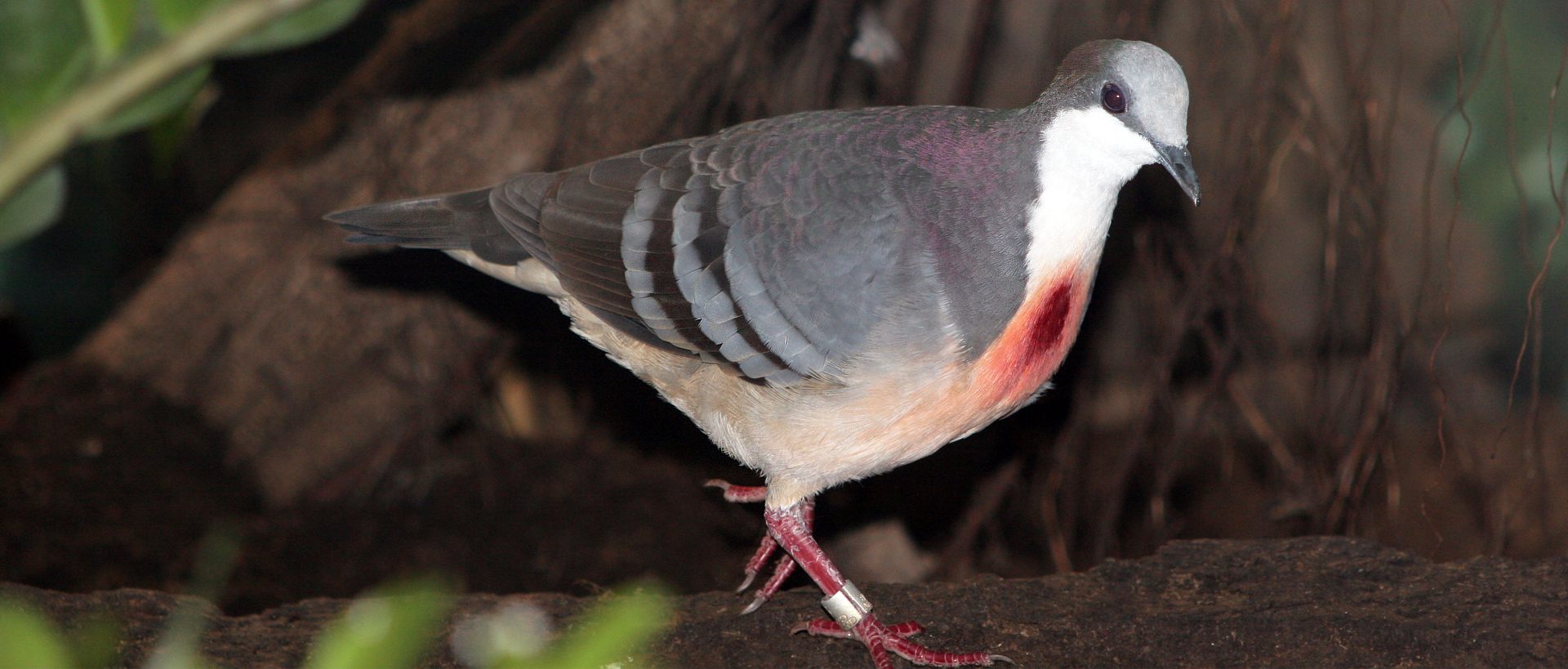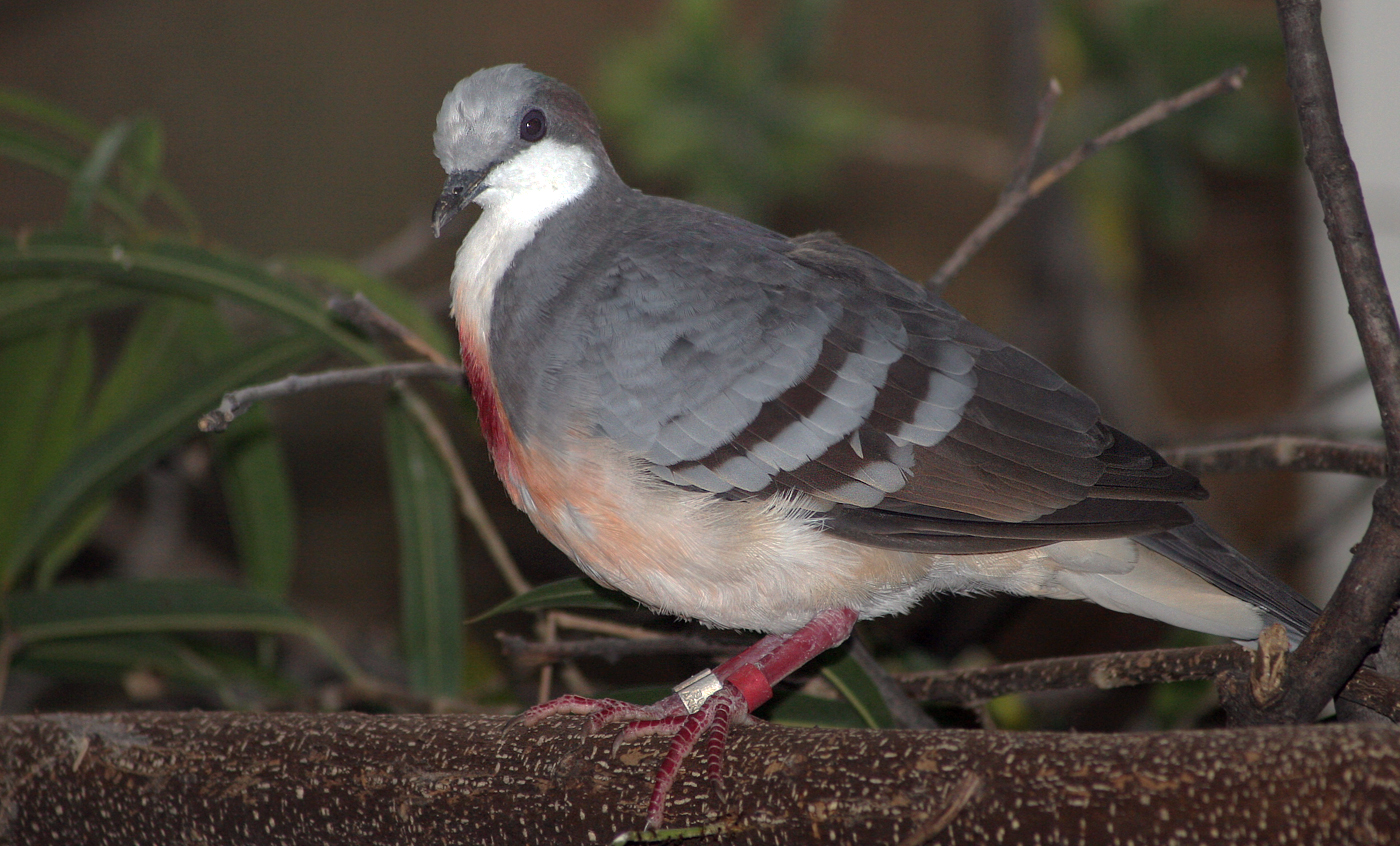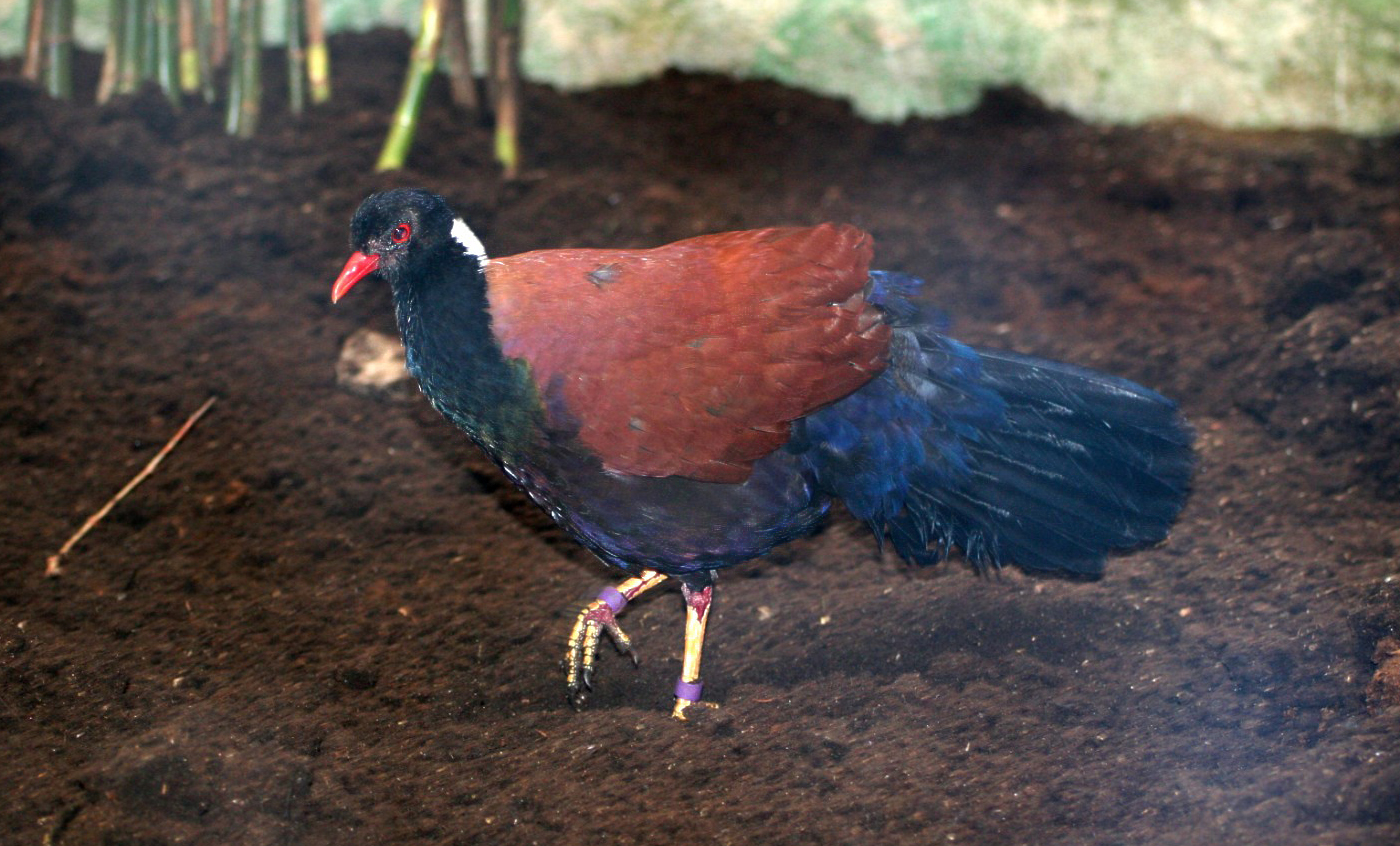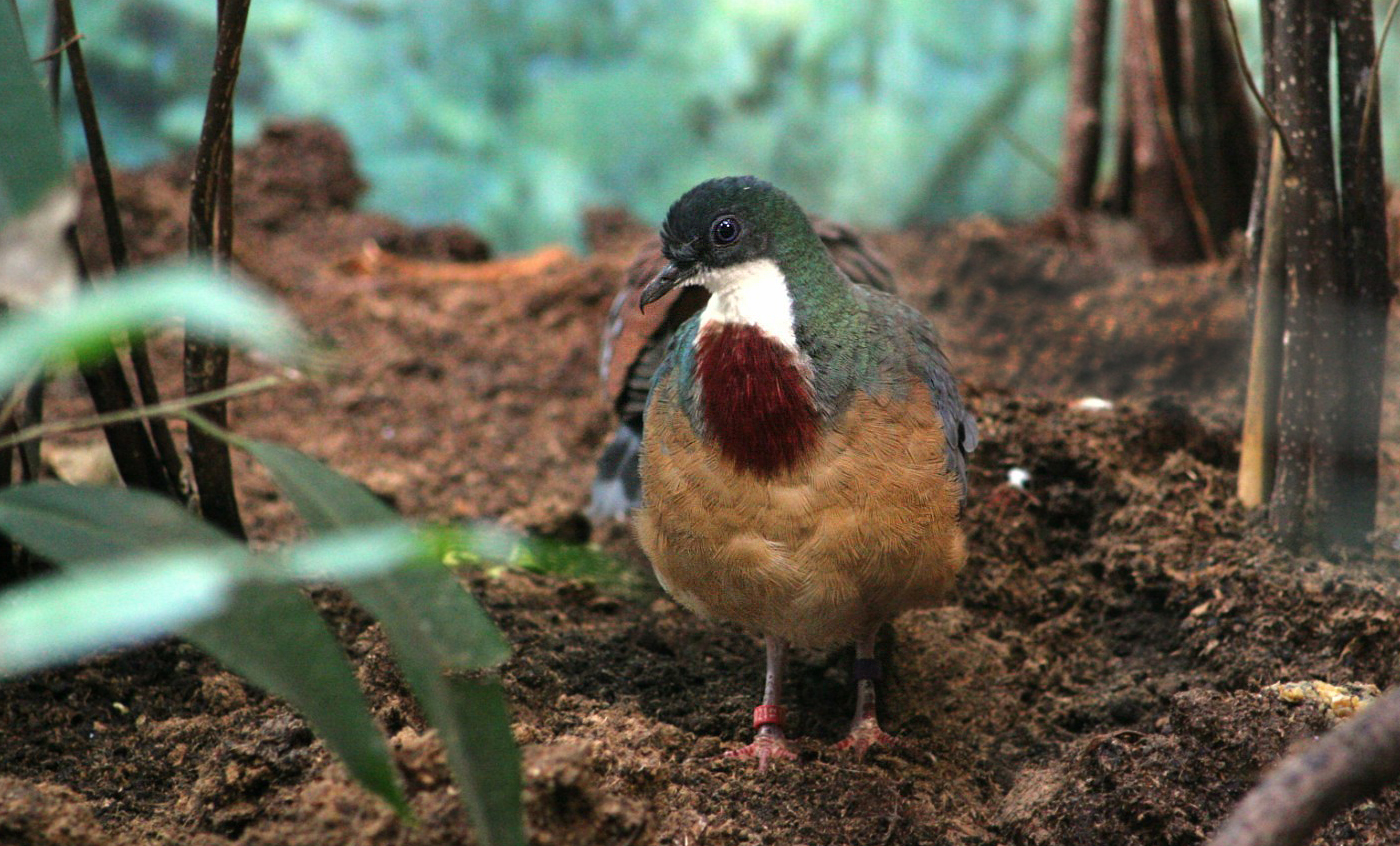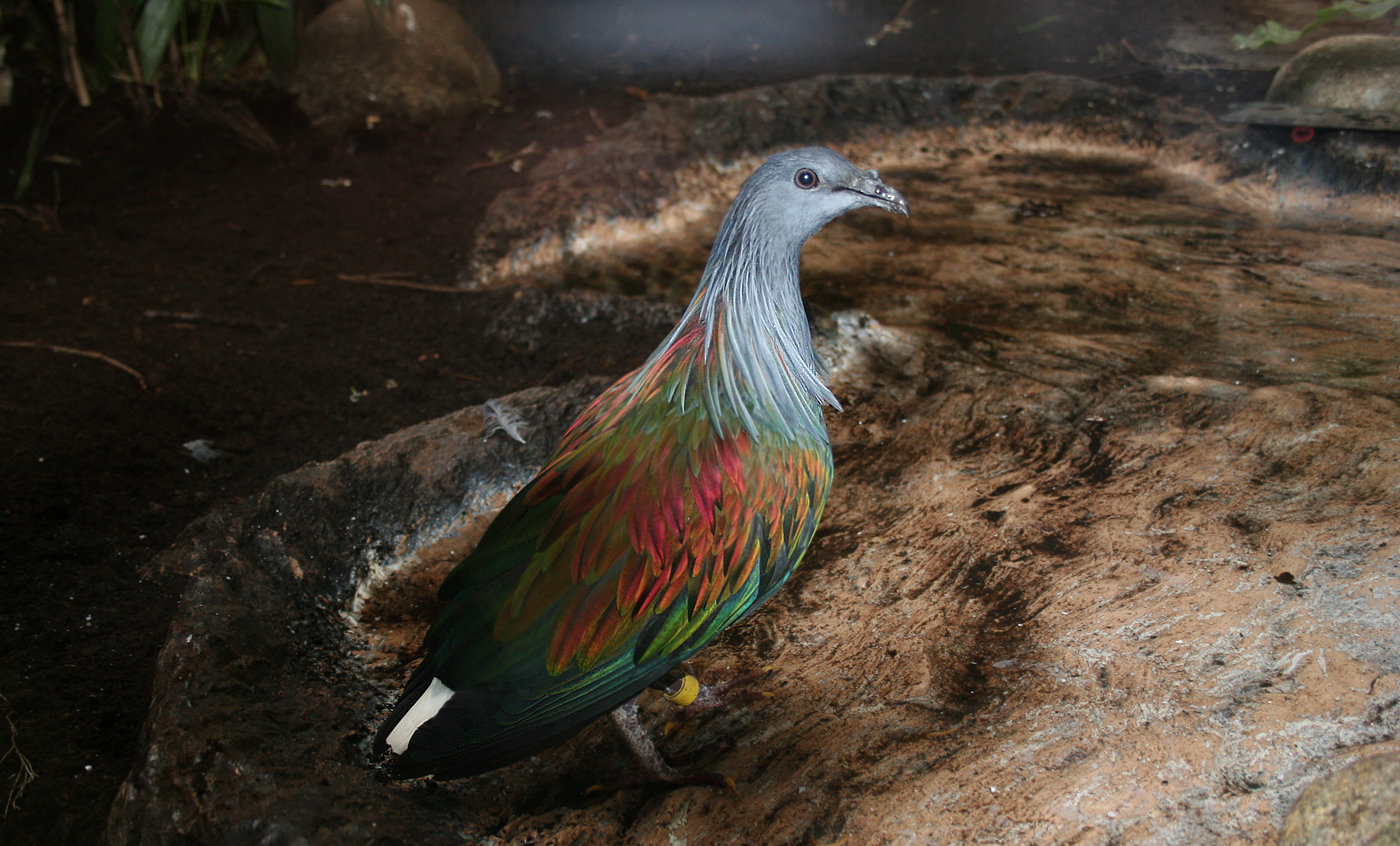Luzon bleeding-heart dove
This dove gets its name from the red feathers on its breast, which stand out against the predominant white colouring of the rest of the bird’s body. It lives in the rainforest, where it feeds on seeds, berries, fallen fruit and small invertebrates.
Breeding program
Natural habit
Philippines
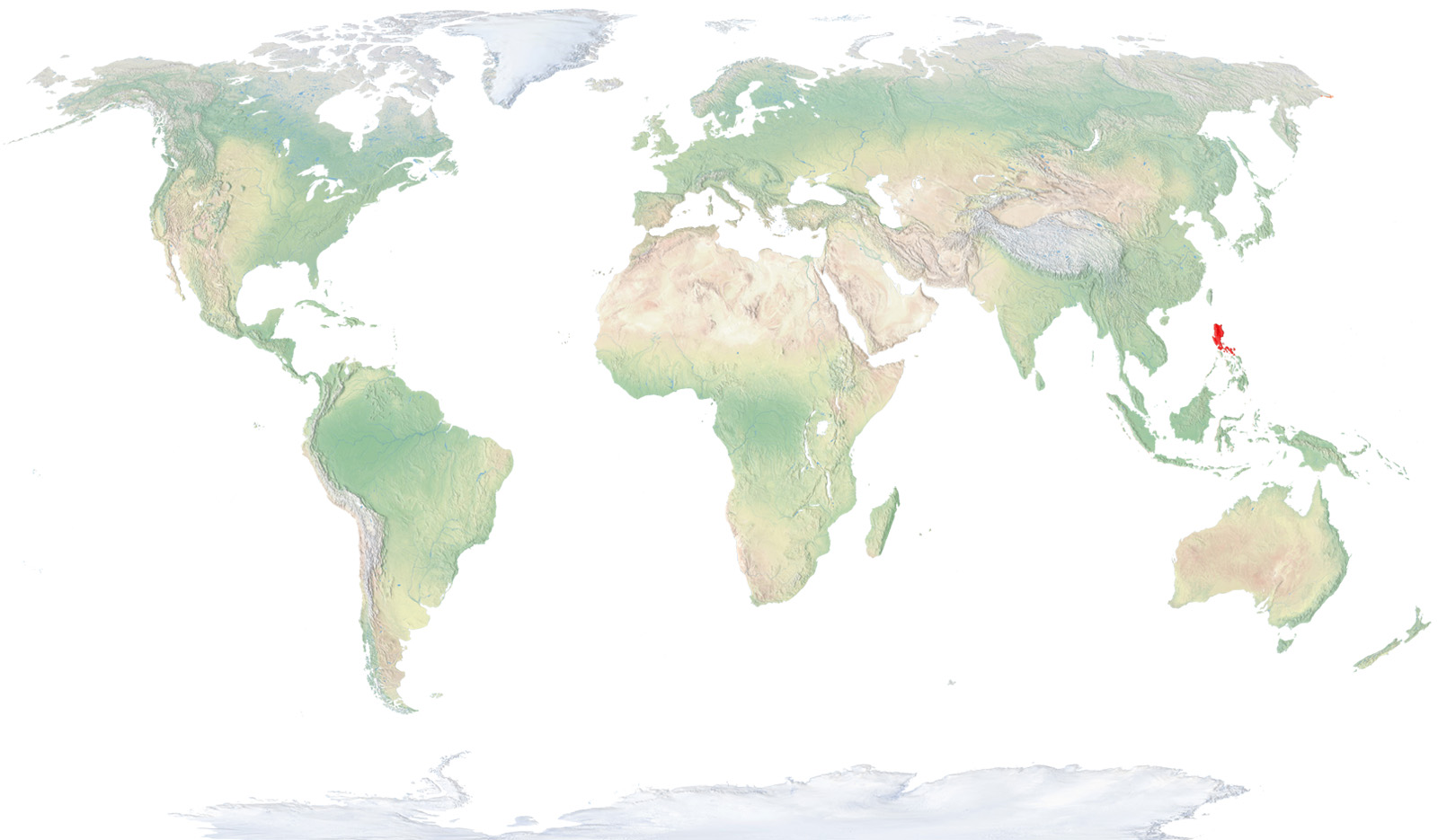
- Distribution / Resident
- Breeding
- Wintering
- Subspecies
Risk level
- Extint
- Extint in the wild
- Critically endangered
- In Danger
- Vulnerable
- Near threatened
- Minor concern
- Insufficient data
- Not evaluated
Taxonomy
Physical characteristics
Biology
Reproduction
Biology
This dove receives its name from the bright-red patch on its chest, standing out over the white colouring that is predominant on this animal's body. The dorsal is dark, with grey and black striped wings.
Their area of distribution is very restricted, as they only inhabit Luzon Island and some other small islands surrounding the archipelago of the Philippines. Their habitat is the rainforests that are located from sea level up to 1400m of altitude.
They feed on seeds, berries, fallen fruits and small invertebrates that they capture on the forest flor.
Although very little is known of their breeding process in nature, specimens in captivity have let us find out a bit more about how they breed. They make nests with lined-up branches and leaves of a certain size, where they lay two eggs, which they incubate for 17 days.
Sedentary, they tend to only travel short distances searching for food.
Their populations have been shrinking in recent years due to direct hunting and the destruction of their natural habitat. They are close to being endangered. The Barcelona Zoo participates in the European Studbook (ESB) for this species in captivity.



